Roman Ruins in Israel
What do you think when the word ‘Israel’ comes to mind? An exotic, faraway land where the natives ride around on camels? The place Jesus was born, ministered, was crucified and rose again? The land of milk and honey, with plenty of other wonderful produce besides? High-tech companies, housed in gleaming modern glass buildings? Miles and miles of sandy beaches, at which people sun themselves and cool off with a dip in the Mediterranean Sea?
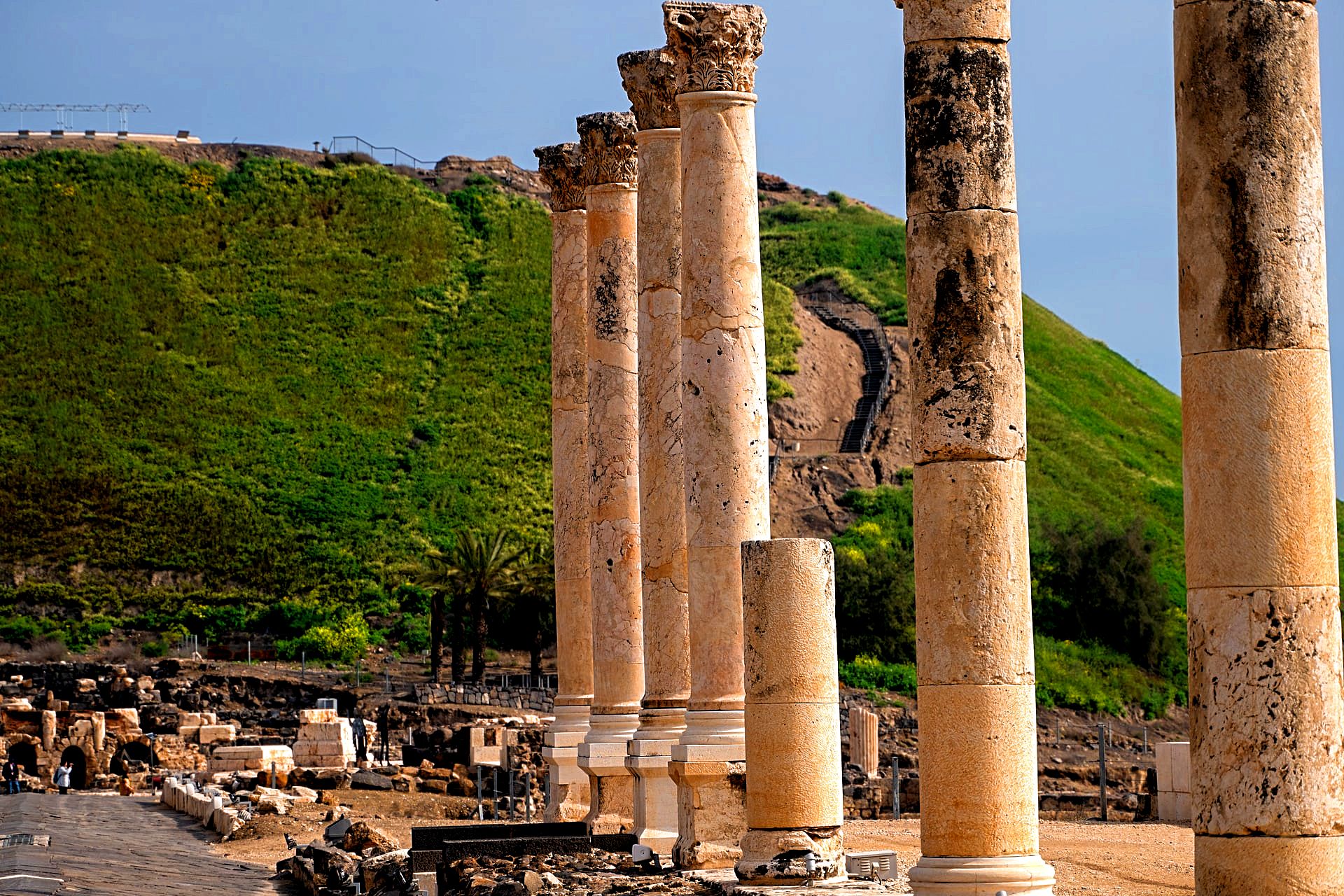
Roman ruins in Beit Shean, Israel. Photo by Patrick Campanale on Unsplash
Why visit Israel?
Well, if you mentioned any of the above, you wouldn’t be wrong, because Israel is a small country but it’s just bursting with things to do and see. Whether you’re looking for a chillout vacation at the beach, a hiking holiday in the Galilee, the opportunity to visit boutique vineyards and enjoy gourmet restaurants or simply the chance to wander the cities and countryside, soaking up the sights and sounds of the place, you won’t be disappointed.
Archaeological Sites at Every Turn
And for anyone interested in history, there’s no doubt about it, Israel’s a top destination. The fact is you can barely take a few steps without tripping over an ancient building or Roman ruins in Israel patiently restored by archaeologists. Actually, compared to other countries in the Mediterranean, Israel has an enormous number of archaeological sites - about 35,000 in approximately 22,00 square km! And that’s some serious history.
In Israel’s long and chequered past, Roman rule was perhaps one of the most exciting periods in terms of building - particularly when it comes to King Herod, who was - by any standards - a Master Builder. Undertaking all kinds of gigantic building projects, the results of his labours are still visible today, and truly a sight to behold. Today, we’re going to look at some of them - Roman ruins all across the country that tell the remarkable story of their period of rule over the Jews.
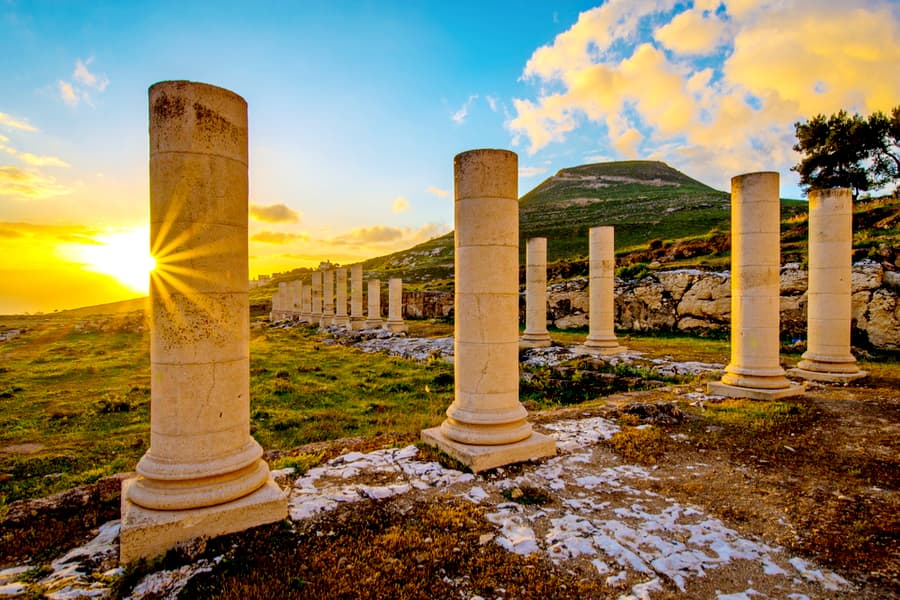
Herodion National Park (Herodium), Israel. Photo credit: © Shutterstock
When exactly was the Roman Period?Roman rule in Israel began around 63 BCE and did not end for almost 400 years. This period in Israel’s history was, in many respects, extraordinary because not only did it incorporate the crucifixion of Jesus and the destruction of the Second Temple, but it was also a period of prosperity (after all, the Romans were not just organised, but obsessive when it came to infrastructure).
For much of these four centuries, Israel (known as ‘Judea’) was an ‘autonomous’ part of the Roman Empire - the Jews paid taxes but had a certain degree of freedom when it came to self-rule. Of course, when disputes arose, the Romans would not hesitate to lay down the law.
However, it was King Herod who really upped the ante, building prolifically during his reign, including the Temple Mount in Jerusalem, the maritime port of Caesarea and palaces at Jericho and Masada, to name but a few. In the words of the scholar Vermes: “Without a doubt, he was the greatest builder in the Holy Land, planning and overseeing the execution of palaces, fortresses, theatres, amphitheatres, harbours and the entire city of Caesarea, and to crown them all, he organised the rebuilding of the Temple of Jerusalem".
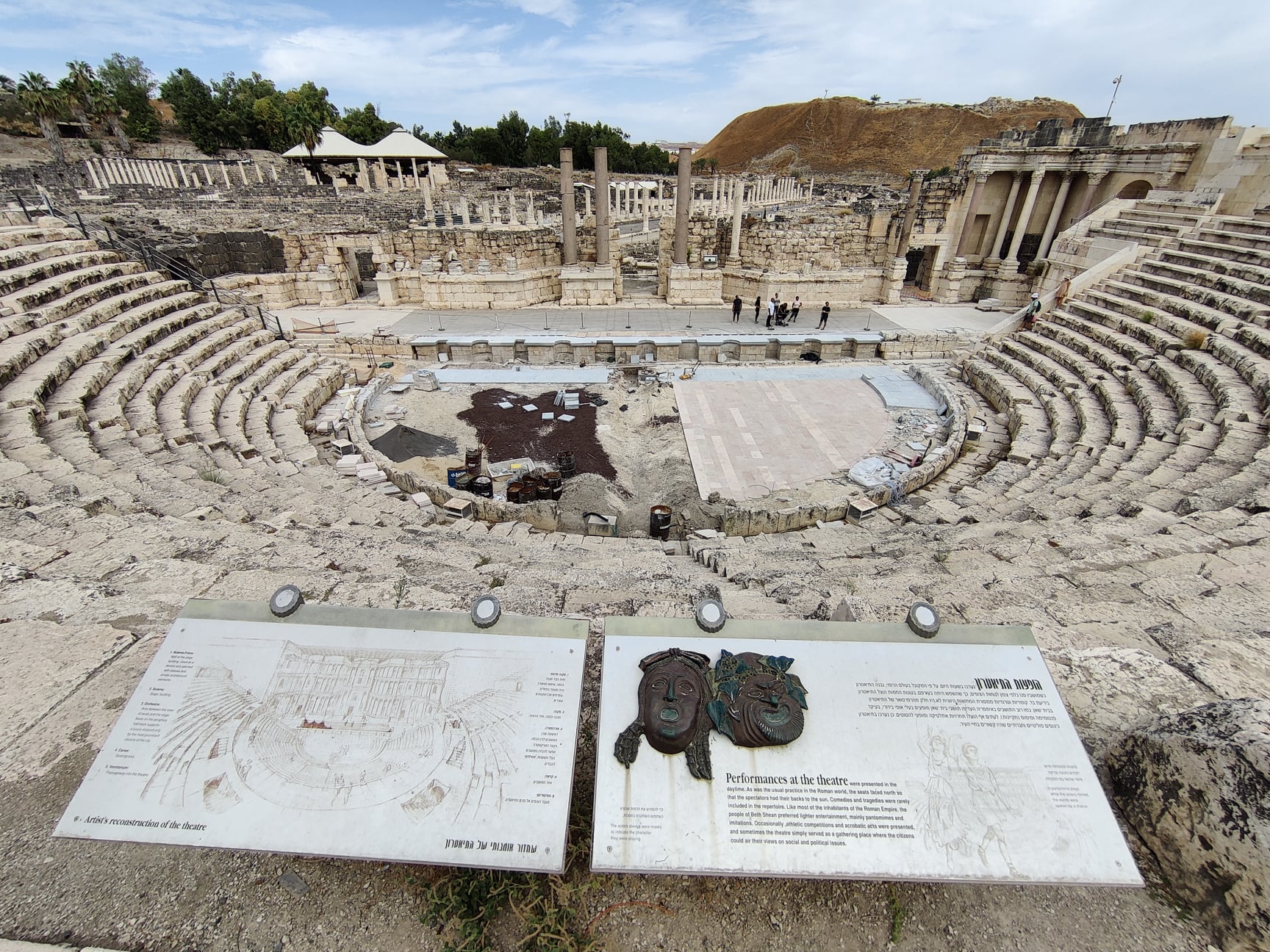
Roman Theatre at Beit Shean National Park, Israel. Photo credit: © Dmitry Mishin
The Roman sites in Israel
Today, all of these sites are easily visited, with many of them ‘must-sees’ in Israel, whether you explore them independently or visit them as part of an organised tour, with an expert guide. Here are a few suggestions, to give you a deeper understanding of how the Romans left their mark in this extraordinary time.
1. Roman sites in Jerusalem
There’s no better place to begin than in the capital of Israel - Jerusalem - and its breathtaking and captivating Old City. Church of the Holy Sepulchre - one of Christianity’s most holy sites, according to tradition this is where Jesus was crucified, buried and resurrected. It was the Roman Emperor Constantine the Great who made Christianity the official religion of his Empire and decided to build a shrine on the spot where Jesus was said to have died.
He actually had the Temple of Venus in Jerusalem demolished as a result and, in doing so, a tomb was discovered that was thought to be the burial place of Jesus. Today, it is visited by millions of pilgrims from around the globe and cared for by priests of different denominations, under rules still in place from Ottoman times!
Practically razed to the ground in 1009, the Holy Sepulchre Church and wider complex were rebuilt in the centuries that were followed by different groups, including the Byzantines and Crusaders. Evidence of this can be seen in the thousands of crosses carved in its stone wall - they were made by crusaders who had travelled to the Holy Land from Europe.
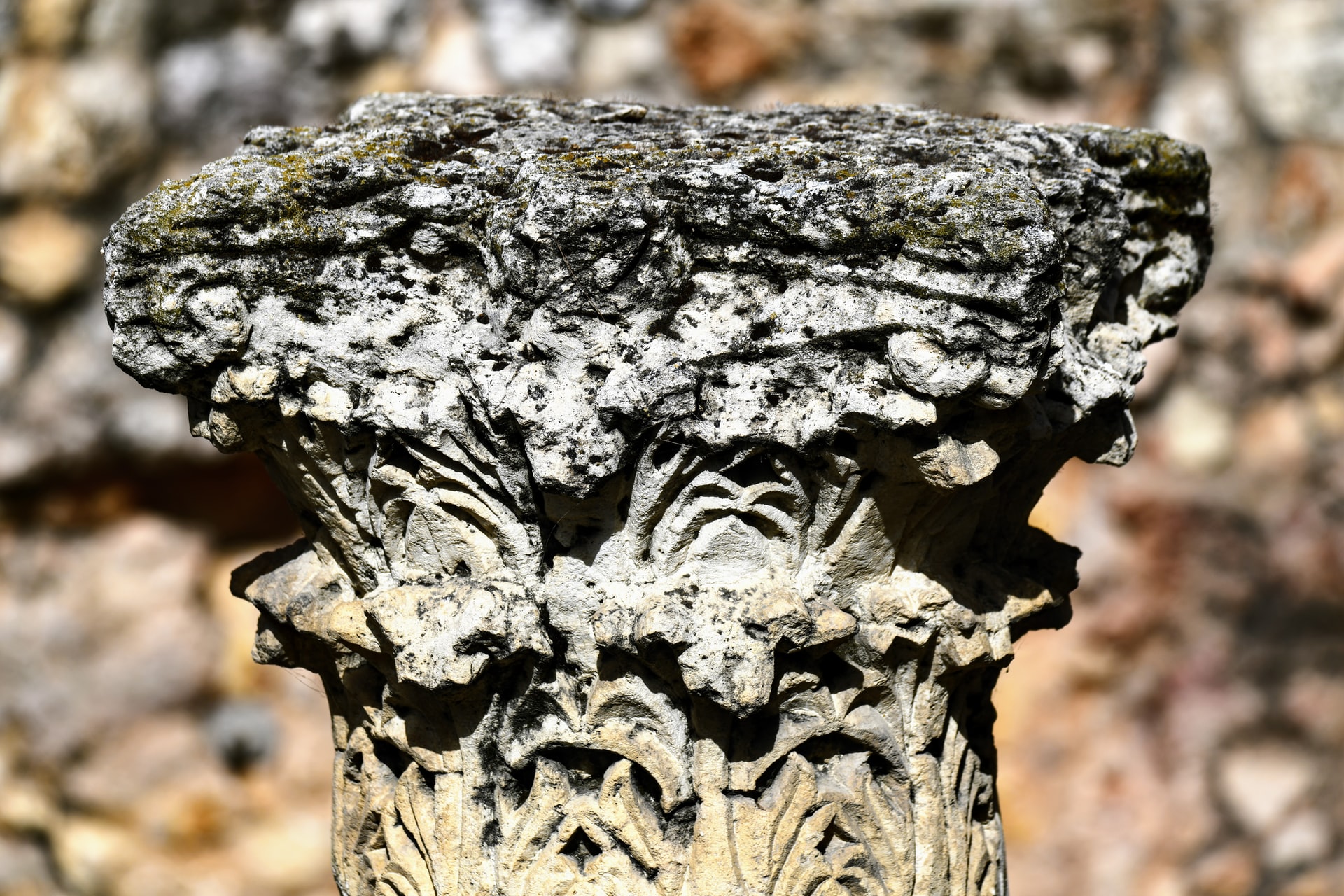
Roman Pillar, Сardo, the Old City of Jerusalem. Photo by Shraga Kopstein on Unsplash
The Cardo - cardos were ancient Roman cities that ran north to south, filled with merchants’ stores and decorated elaborately with stone columns. Jerusalem’s Cardo was no different, beginning at the Damascus Gate and running south through the Old City, ending at Zion Gate.During excavations inside the Jewish quarter, archaeologists discovered that it had a central open-air passage for both carriages and animals, as well as pedestrian sidewalks. Today, you can still walk its cobblestoned streets and admire the arches, Corinthian columns and stone walls.
Second Temple Compound and Western Wall - within this compound lies both Temple Mount (housing the Dome of the Rock) and the Kotel - the last remaining wall of the Second Temple, built by Herod. Complete with pinnacles, inner courts, retaining walls and underground vaults, Jews from across the Roman Empire would travel there (via the port of Jaffa) to ritually cleanse themselves then worship.
Today, it remains an extraordinary site - the Western Wall Plaza is open around the clock but it’s likely that whatever time you choose to visit it, you will see Jews close to the wall, singing, praying and placing notes they have written to God in its cracks. You can also take a tour of the Western Wall tunnels, underground, which run for 488 metres and were built to carry water from nearby valleys to the Old City.
City of David - actually located just outside of the Old City walls, surrounded by the Kidron Valley, Mount of Olives and Mount Zion. It was after David’s amazing conquest over Goliath that it took his name… and soon after, his son Solomon would erect the first Temple. After the Six-Day war in 1967, extensive excavations were carried out and today you can see treasures dating not just from Roman times, but also Greek, Muslim, Persian and Ottoman eras.
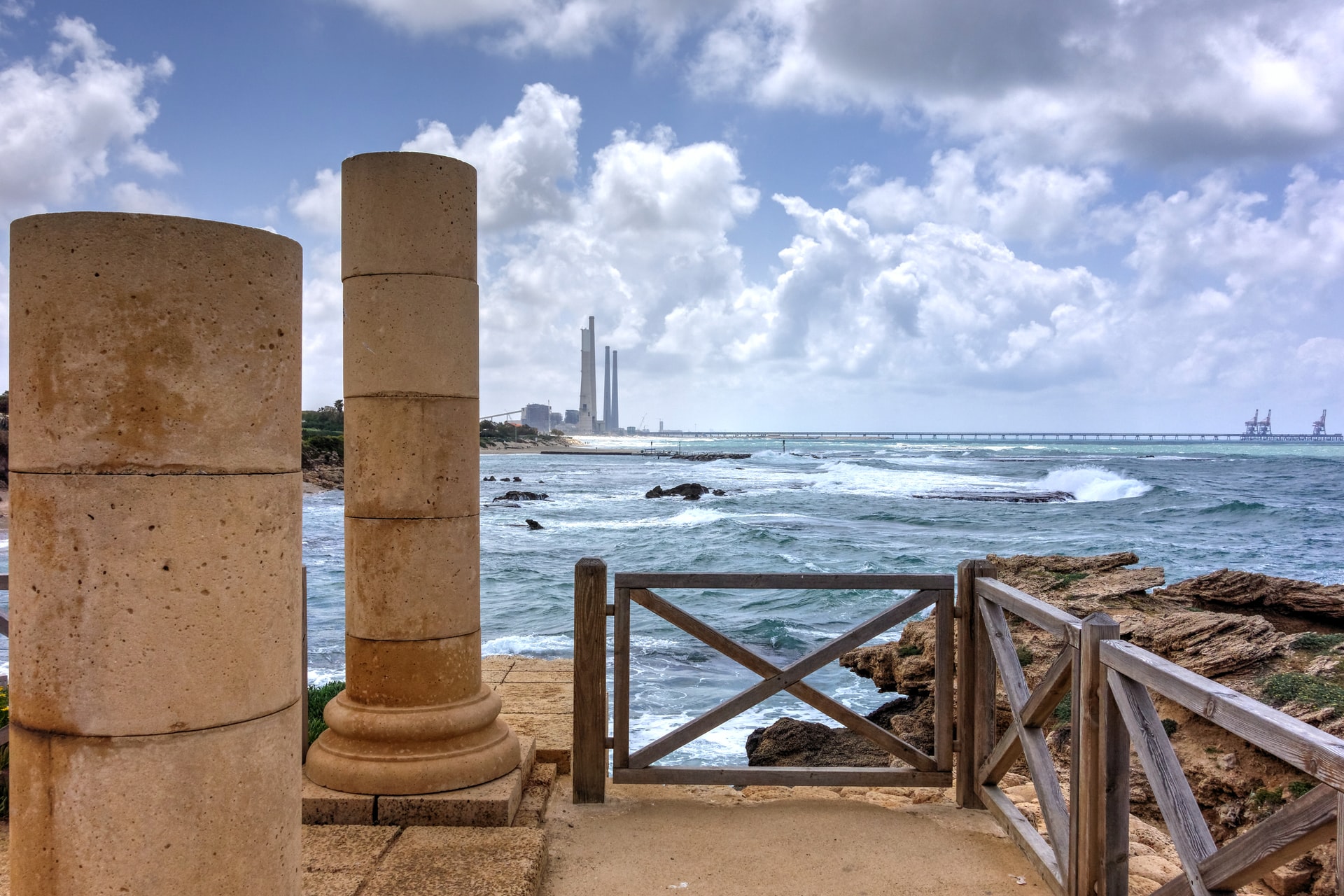
Caesarea ruins at the Mediterranean Sea, Israel. Photo by Jacques Bopp on Unsplash
2. The Roman site of Caesarea
Situated on the Mediterranean coast, about an hour’s drive north of Tel Aviv, this is one of Israel's most impressive archaeological sites. Once a Phoenician port, King Herod built here a magnificent harbour (which could accommodate 300 ships!) and afterwards an aqueduct (bringing water from Mount Carmel), hippodrome, amphitheatre and even a Roman palace.
Excavations in recent times have uncovered no end of treasures, including a mosaic floor, synagogue, bathhouse, a temple dedicated to Augustus Caesar government buildings, courtyards and a cardo. Caesaria really is a ‘must visit’ on any visit to Israel, not just because of its ruins but also because of the beautiful views from atop the harbour.
3. Masada National Park
Probably Israel's most visited site, the astonishing fortress of Masada is situated in the remote and barren Judean desert, close to the Dead Sea. Built by King Herod for use as a private residence, today you can ascend either by cable car or by hiking its long, winding snake path. At the top, as well as marvellous views looking out as far as the Dead Sea, you’ll see the remains of a bathhouse, mosaic floors, thermal baths, storehouses (with clay pots) and a magnificent palace.
Masada is also the site at which the famous revolt of the Maccabees against the Romans took place, culminating in a siege by the Romans and mass suicide of the Jews there. In recent years, archaeologists have found coins minted within the time frame of the rebellion, fragments of Torah scrolls and even skeletons. As you wander the complex, you can’t help but be filled with a sense of awe - this was truly a feat of engineering, as well as the last stand of its Jewish patriots.
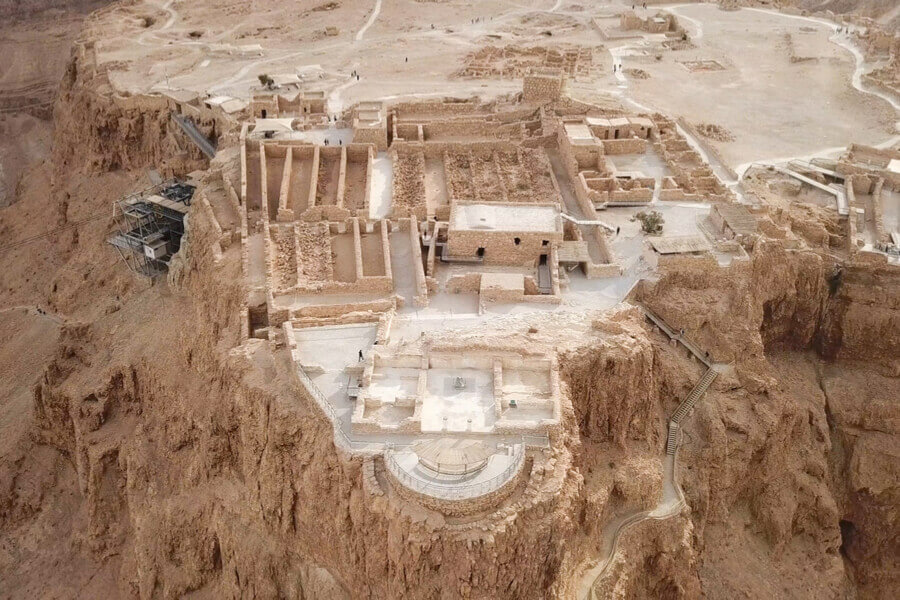
Masada National Park, Israel. Photo credit: © Shutterstock
4. Beit Shean/Scythopolis
This enormous national park in Beit Shean in northern Israel was once a city named Scypotholis. Built by the Roman statesman Gabinius, it was the only city of its time west of the Jordan river and flourished under the ‘Pax Romana’ (a period generally regarded by scholars as to the ‘golden age’ of Roman rule).Today it is home to one of the best-preserved Roman theatres of its time (it could seat 7,000 people), not to mention Roman temples, cardo, stores, the workshops of artisans, collonaded streets, and a hippodrome. Excavations have uncovered rare mosaics, burial tombs (in which sarcophagi have been found) and other notable treasures, including a bronze incense shovel.
As well as these spectacular Roman ruins, you can also wander around buildings from other periods - Crusaders, Mamluks and Ottomans to name a few. The setting of this park is also wonderful - it’s surrounded by dramatic mountain scenery, which only adds to its grand past. A perfect attraction as part of any trip to Northern Israel.
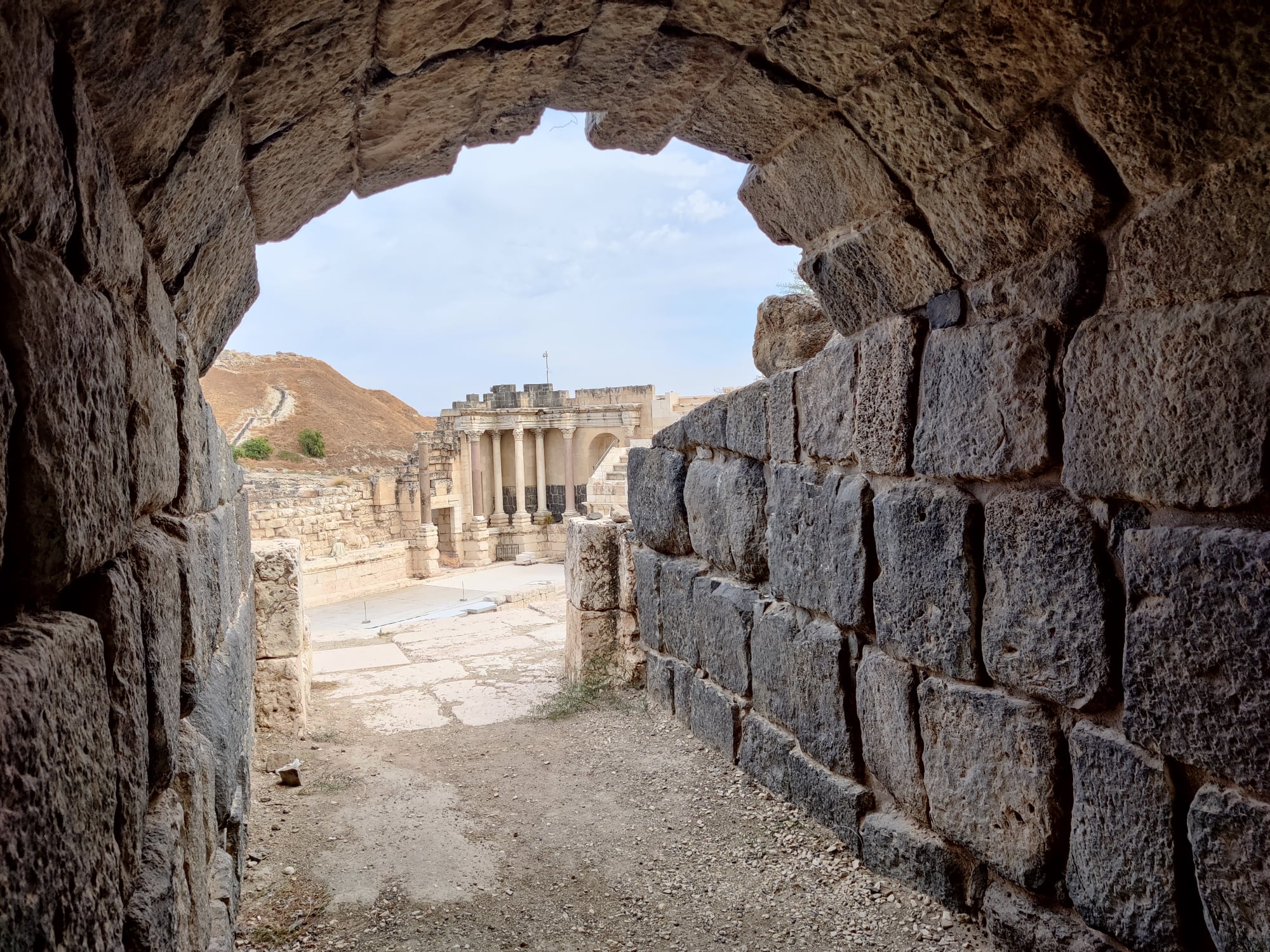
Beit Shean Archeological site, Israel. Photo credit: © Dmitry Mishin
5. Winter Palace of JerichoAbout 3 kms from Jericho stands a winter palace constructed by Herod the Great - who, as well as being a master builder, had a taste for the finer things in life. This huge palace complex stretched across the entire Wadi Qelt gorge, not too far from the Monastery of St. George, and was connected at both ends by a bridge.
Inside were upmarket amenities, including spacious sunken gardens, swimming pools and courtyards. Excavations beginning in 1973 actually showed the complex was made up of three different palaces and showed just how opulent life in Jericho was. Even the bathhouse was sophisticated - paved with red, white and black geometric tiles, it is one of the earliest mosaic floors uncovered in Israel.
Additionally, because this palace was reasonably close to Jerusalem (it could be reached within a day) and had access to a regular water supply, from the nearby springs, it was also a place where dates, spices and aromatic plants were grown. With unobstructed views of incredibly desert scenery, it’s an easy trip from the capital, and can even be visited en route to the Dead Sea.
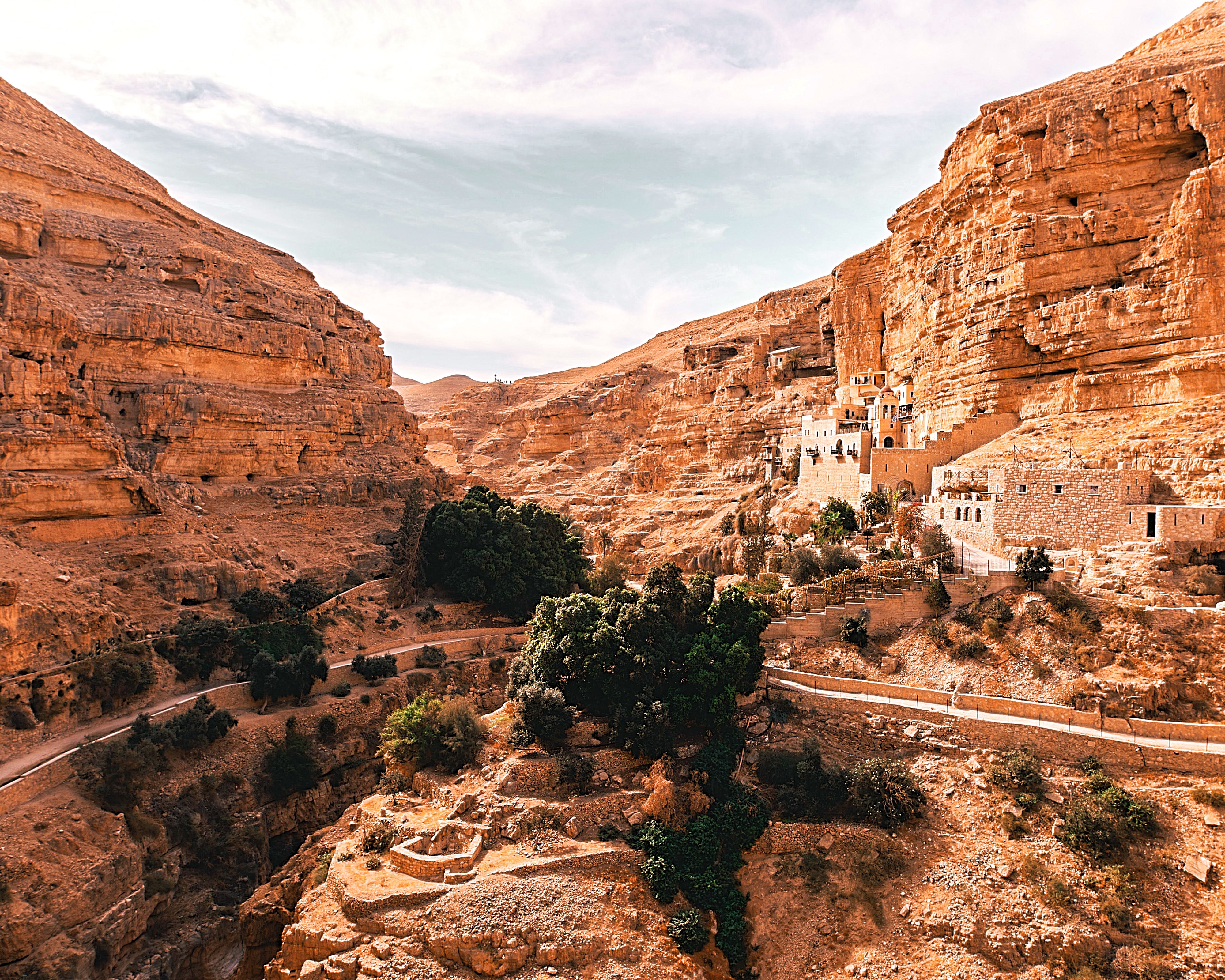
Wadi Qelt Gorge, West Bank. Photo by Christian Burri on Unsplash
6. Herodion
This impressive archaeological site is home to yet another palace belonging to King Herod (in case you are wondering, he had 15 of them!) Also known as the ‘Mountain of Paradise’ or ‘Jabal al-Fourdis’ it is only 12 km south of Jerusalem and was commissioned by the king, and built between 23 and 15 BCE. Today, it is believed to be the burial spot of Herod.
Archaeologists working at Herodion have uncovered many elaborate buildings, including a synagogue, bathhouse, churches, tunnels, the palace itself and also a Mausoleum in which Herod is believed to have been interred. As you walk around, marvelling at this fortification, look out for the theatre that seated 400 and the escape tunnels (carved out by the rebels during the Bar Kochba rebellion).
7. Apollonia/Arsuf
Established by the Persians, between 5 and 6 BCE, this settlement close to Herzliya, on the Mediterranean coast, was once inhabited by a community famed for a purple dye that they made and exported! During Roman times, the town grew substantially and today you can see the remains of an elegant Roman villa, built around 2 CE using the finest Roman architectural touches.
Furthermore, Apollonia is well-known for the remains of a Crusader castle established there in the 13th century. After you’ve explored the villa and castle, walk along the coastal path, looking out for the Sidna Ali Mosque, built in 1481, and the furnace, constructed in the Byzantine period. Archaeologists discovered shards of pottery and glass close by, concluding that the furnace was used to make both clay and glass vessels.
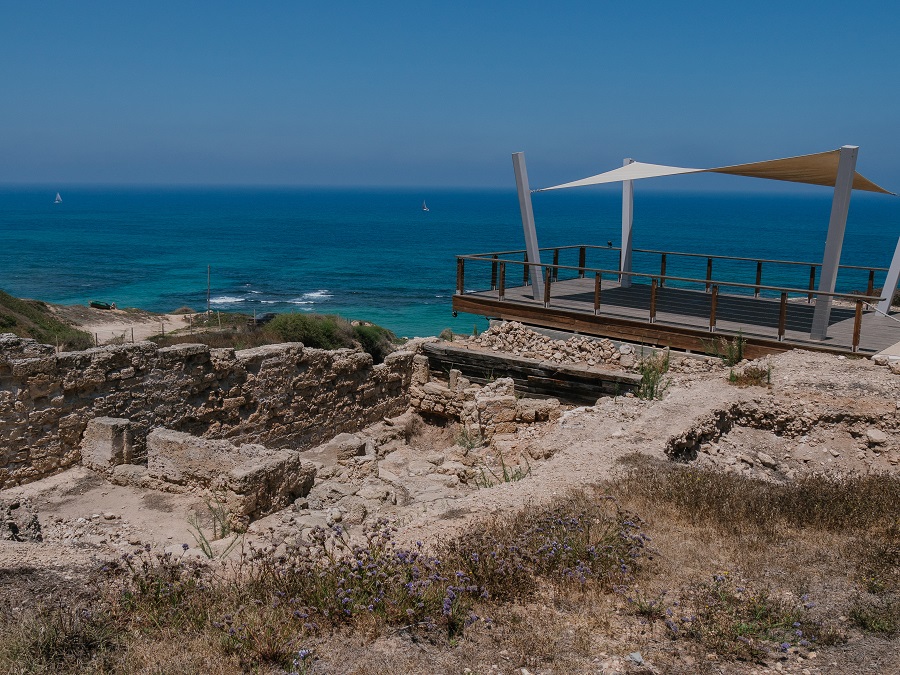
Apollonia National Park, Israel. Photo credit: © Dmitry Mishin
8. Tsipori
Once the capital of the Galilee, Tsipori was known in Roman times Diocaesaraea lies just a few kilometres from Nazareth and is an archaeologist's delight, containing remains from all kinds of periods, including Roman, Byzantine, early Islamic, Crusader and Mamluk. Tsipori, in Hebrew, means ‘little bird’ and this name might refer to the fact that the site is perched on the side of a mountain like its namesake could be.
King Herod captured this city in 37 BCE and, today, much of Tsipori has been subject to excavations, which have revealed cobblestoned streets, homes of the Jewish people who lived there and also ritual baths. It’s also home to a Roman theatre, villas (containing elaborate mosaic floors) and a 5th-century synagogue. Archaeologists from the Hebrew University of Jerusalem also made a discovery, in recent years, of a winepress that dates back to Byzantine times, found inside a Roman-era reservoir…
At Bein Harim, we offer both day trips, private tours and tour packages around Israel, many of which incorporate some (if not all) of the Roman ruins in Israel. Don't hesitate to get in touch with us if you’d like further information. We know Israel well and our guides are experienced and professional and perfect when it comes to leading groups around these ancient sites. Enjoy your trip - and we hope you get to enjoy some of these extraordinary places…
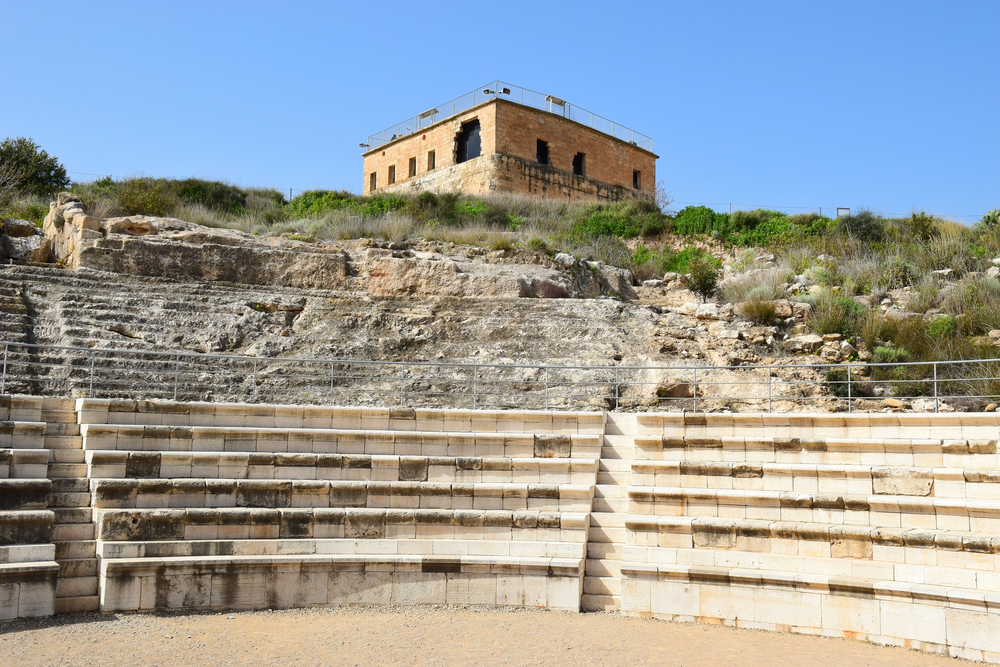
Tsipori National Park. Photo credit: © Shutterstock
 Login / Register
Login / Register
 Contact Us
Contact Us
 Certificate of Excellence
Certificate of Excellence Guaranteed Departure
Guaranteed Departure Low Prices Guaranteed
Low Prices Guaranteed 24/7 Support
24/7 Support




